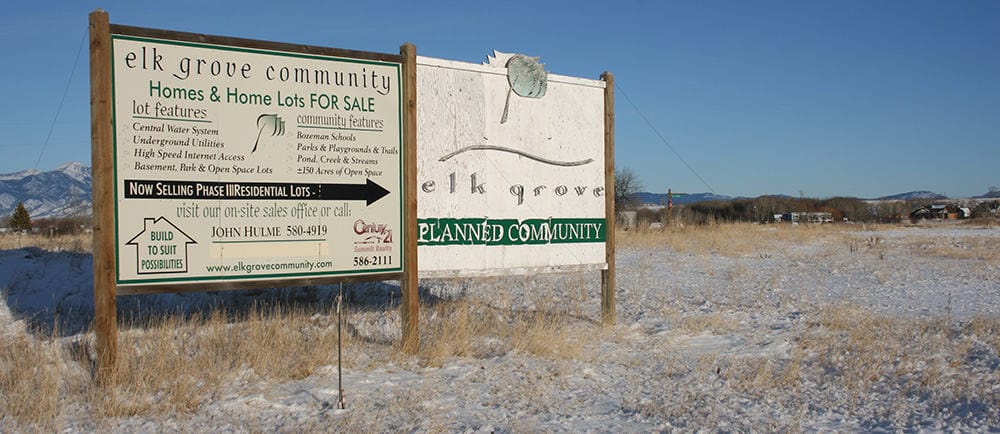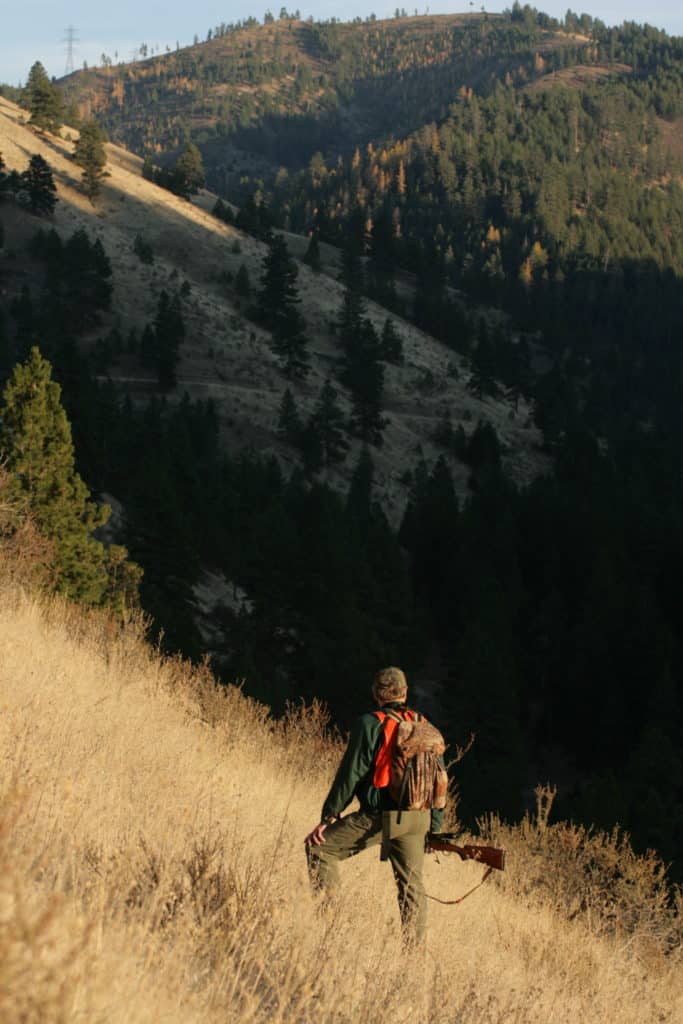
Guide to Hunting the Changing West
by PJ DelHomme
More hunters. Fewer tags. Less available land. This isn’t the West your grandfather hunted. Fear not. There’s still hope–you can have a great hunt in the Rockies. Here’s how.
For more than 20 years, I’ve lived and hunted in Montana. Over that time, hunting has changed. Private ranch lands, which used to be accessible by a knock on the door and perhaps a bottle of ripple, are leased to private outfitters and posted with no trespassing signs for the rest of us. Other ranches have been purchased as “amenity” ranches, and they don’t allow hunting at all. Plus, as a nation, we’re simply wealthier than we were 30, 40 years ago. More hunters have more disposable income, allowing them to apply for a finite number of tags in every state, making them tougher to draw. Vacant campgrounds are now flooded with fifth-wheels and four-wheelers. While there are plenty of barriers to hunting the great wide open, here are some tips to overcome them.

A common site at many gated roads and trailheads.
You Need Intel
Real estate is a hot commodity in the West, and big ranches aren’t immune to being gobbled up by big money. A ranch your dad hunted 30 years ago likely has new owners who may or may not allow hunting. If they do allow hunting, get ready to open the checkbook.

Real estate is a hot commodity in the West.
But–you don’t need private land. The West boasts millions of acres of public land open to all of us. That’s a lot of ground, and it can be daunting. To start your hunt, just pick a state and begin your research.
Each state has an iconic species. Wyoming is known for pronghorn. Colorado offers outstanding elk hunting—with over-the-counter tags that go on sale August 2. With roughly 250,000 elk, it’s a great place for first-time big game hunters.
Sam Phipps, USA conservation programs manager, lives in Missouri and chooses to bowhunt elk in Montana as often as he can. Non-resident tags aren’t tough to draw, he says, and he’s into elk every time he goes, which is more than I can say for myself. Why Montana? His in-laws have been hunting elk in one particular area since the 1980s. Years ago, they invited him along to show him the ropes, but the deal was that he had to do the grunt work. The lesson: if you know someone familiar with an area, offer up your services, be it a strong back or exceptional culinary skills.
Tame the Tag Beast

These aren’t the guys your grandpappy hunted with.
Because there are more hopeful hunters than tags, nearly every western state has adopted some kind of tag draw system, which means not everyone gets a tag every year. To me, navigating a state’s draw system is not fun, nor is it how I choose to spend my time. For others, it’s a labor of love—with an emphasis on labor.
To help you sift through the mind-numbing morass of navigating tag draw systems, listen to podcasts like Randy Newberg’s Hunt Talk Radio and Built to Hunt, produced by Huntin’ Fool. If you’re willing to apply for tags on your own, another great resource is goHUNT.com. With a $150 annual membership, you get access to their tag research tools, which will keep you researching way past bedtime.
If you like their podcast and have more money than time, consider a tag service offered by the experts at Huntin’ Fool. For a fee, they will take the pain out of applying for tags and points and do it for you.
Get in Shape

The farther you get from other hunters, the more animals you will see.
More hunters on the landscape equates to wary and elusive animals. On opening day, the sound of one gunshot will have entire herds heading for the safety of private ranches where hunting is restricted. These animals aren’t dumb. The solution is to get away from the crowds, which means you better be willing to walk.
If you get out of breath walking from the truck to the treestand, hunting the West is going to hurt. It’s not exactly flat, and if it is, the animals are going to see you coming from far away. The secret to Phipps’ successful elk encounters is getting far away from roads and people. From his in-laws’ base camp near the truck, he continues up to nearly 10,000-feet and sets up a spike camp far from the trailhead. If game animals aren’t congregated on private land, they’re going to be deep in the dark timber. The farther you get from other hunters, the more animals you’re going to see.
Phipps says getting into “elk shape” is paramount to getting where the elk are. You might see him walking around his neighborhood with a full hunting pack or at the gym on a stair climber—wearing a full pack. Remember, you’re not going to get into shape once you’re on the trail.
If you’ve ever considered heading west to hunt, don’t wait. You’re not getting any younger, and people aren’t going to stop moving here any time soon. There’s an opportunity for every kind of hunter. You just have to be flexible and do your homework. It also doesn’t hurt to have a few in-laws to show you around.
Other Articles You Might Like
American Indian Reservations Offer Additional Chance to Draw a Hunting Tag
Hints for Drawing the Tag of a Lifetime







